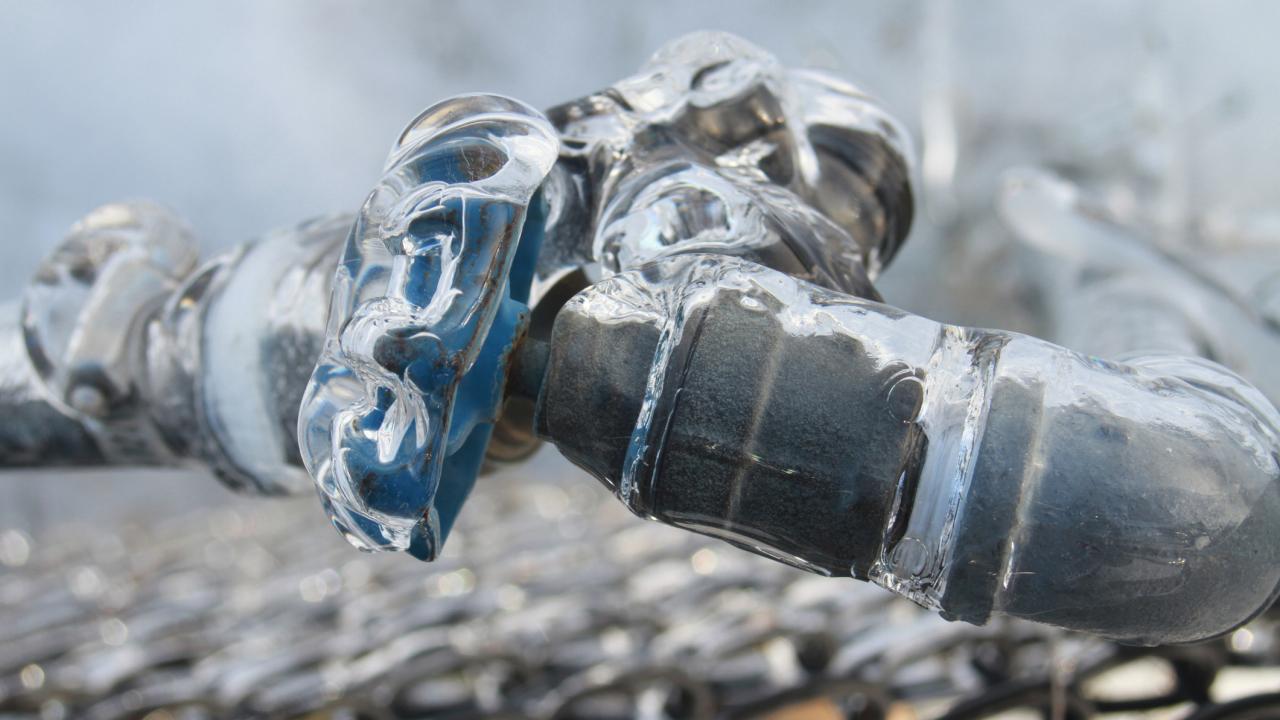Important Advice for Preventing Frozen Plumbing in Cold Weather Conditions
Important Advice for Preventing Frozen Plumbing in Cold Weather Conditions
Blog Article
This article down the page involving Preventing and dealing with frozen pipes is totally entertaining. Don't skip it.

Winter can ruin your pipes, especially by freezing pipes. Below's exactly how to prevent it from taking place and what to do if it does.
Introduction
As temperature levels drop, the threat of frozen pipelines increases, possibly leading to expensive repairs and water damage. Recognizing just how to prevent frozen pipelines is crucial for property owners in cool environments.
Understanding Frozen Pipes
What creates pipes to freeze?
Pipes freeze when subjected to temperature levels listed below 32 ° F (0 ° C) for expanded durations. As water inside the pipes freezes, it expands, putting pressure on the pipe walls and potentially causing them to burst.
Risks and problems
Frozen pipelines can bring about water system disruptions, property damages, and expensive repair services. Ruptured pipes can flooding homes and create substantial structural damages.
Indications of Frozen Piping
Recognizing icy pipelines early can prevent them from breaking.
How to identify frozen pipelines
Seek lowered water flow from taps, uncommon smells or noises from pipes, and noticeable frost on exposed pipelines.
Prevention Tips
Shielding prone pipelines
Wrap pipelines in insulation sleeves or make use of heat tape to secure them from freezing temperature levels. Focus on pipes in unheated or external locations of the home.
Heating techniques
Keep indoor rooms sufficiently warmed, especially areas with plumbing. Open cupboard doors to enable warm air to distribute around pipes under sinks.
Securing Outside Pipes
Garden hoses and exterior taps
Separate and drain pipes garden hose pipes before winter. Install frost-proof faucets or cover outside taps with shielded caps.
What to Do If Your Pipes Freeze
Immediate actions to take
If you believe icy pipelines, keep faucets open up to alleviate pressure as the ice thaws. Use a hairdryer or towels soaked in hot water to thaw pipelines gradually.
Long-Term Solutions
Architectural changes
Consider rerouting pipes away from exterior walls or unheated areas. Include additional insulation to attic rooms, cellars, and crawl spaces.
Upgrading insulation
Purchase high-grade insulation for pipelines, attics, and wall surfaces. Correct insulation aids keep regular temperatures and decreases the threat of frozen pipes.
Verdict
Avoiding icy pipes needs aggressive measures and quick reactions. By recognizing the reasons, indicators, and safety nets, home owners can protect their plumbing throughout winter.
6 Proven Ways to Prevent Frozen Pipes and Protect Your Home
Disconnect and Drain Garden Hoses
Before winter arrives, start by disconnecting your garden hoses and draining any remaining water. Close the shut-off valves that supply outdoor hose bibs and leave the outdoor faucet open to allow any residual water to drain. For extra protection, consider using faucet covers throughout the colder months. It’s also important to drain water from any sprinkler supply lines following the manufacturer’s directions.
Insulate Exposed Pipes
Insulating your pipes is an effective way to prevent freezing. Pipe insulation is readily available at home improvement stores and is relatively inexpensive. Pay close attention to pipes in unheated areas such as the attic, basement, crawl spaces, or garage. Apply foam insulation generously to create a buffer against the cold. You can also wrap your pipes in heat tape or thermostat-controlled heat cables for added warmth.
Seal Air Leaks
Inspect your home for any cracks or openings that could let in cold air. Seal any holes around the piping in interior or exterior walls, as well as the sill plates where your home rests on its foundation. Additionally, make sure to keep your garage door closed unless you’re entering or exiting. Leaving it open creates a significant air leak that can lead to frozen pipes.
Allow Warm Air Circulation
During cold snaps, it’s essential to allow warm air to circulate evenly throughout your home. Leave interior doors ajar to promote better airflow. Open kitchen and bathroom cabinets to help distribute heat consistently around the rooms. If you have small children or pets, be sure to remove any household chemicals or potentially harmful cleaners from open cabinets for safety.
Let Faucets Drip
A small trickle of water can make a big difference in preventing ice formation inside your pipes. When temperatures drop significantly, start a drip of water from all faucets served by exposed pipes. This continuous flow helps prevent the water from freezing. Additionally, running a few faucets slightly can relieve pressure inside the pipes, reducing the chances of a rupture if the water inside does freeze.
https://choateshvac.com/6-proven-ways-to-prevent-frozen-pipes-and-protect-your-home/

Hopefully you enjoyed reading our topic on How to prepare your home plumbing for winter weather. Many thanks for spending some time to read through our post. Enjoyed our blog entry? Please quickly share it. Help others check it out. Many thanks for taking the time to read it.
This Website Report this page